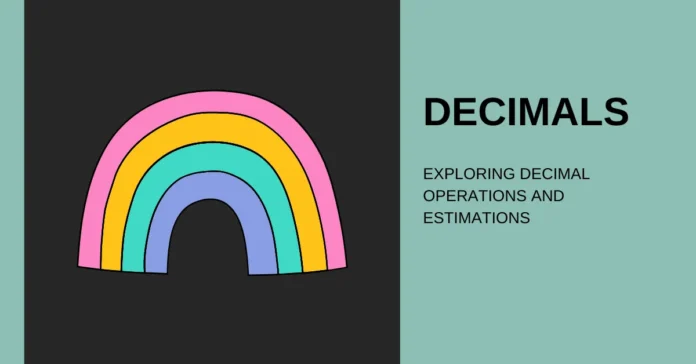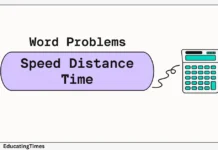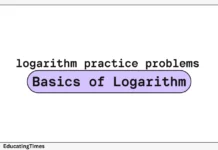Decimals (adding, subtracting, multiplying, and dividing)
Fractions (adding, subtracting, multiplying, and dividing)
Steps for Decimals Operation
Adding Decimals:
Align the decimal points of the two numbers.
Add the digits in each place value column.
If the sum of any column is 10 or more, carry over the extra digit to the next column.
Write the final sum with the decimal point in the same place as the original numbers.
Subtracting Decimals:
Align the decimal points of the two numbers.
Subtract the digits in each place value column.
If the digit in the minuend column is smaller than the digit in the corresponding subtrahend column, borrow from the next column to the left.
Write the final difference with the decimal point in the same place as the original numbers.
Multiplying Decimals:
Ignore the decimal points of the two numbers and multiply as if they were whole numbers.
Count the total number of digits to the right of the decimal point in the original numbers.
Place the decimal point in the product so that there are the same number of digits to the right of the decimal point as there were in the original numbers.
Dividing Decimals:
Move the decimal point in the divisor (the number being divided into the dividend) to the right until it becomes a whole number.
Move the decimal point in the dividend (the number being divided) to the right the same number of times as the divisor.
Divide the two numbers as we would with whole numbers.
Place the decimal point in the quotient directly above the decimal point in the dividend.
Question 1:
3.8 + 2.7 = ?
Solution: 6.5
Question 2:
8.9 – 3.2 = ?
Solution: 5.7
Question 3:
2.5 x 4.7 = ?
Solution: 11.75
Question 4:
9.6 ÷ 2.4 = ?
Solution: 4
Question 5:
7.4 + 5.2 – 2.9 = ?
Solution: 9.7
Question 6:
6.5 – 3.7 + 1.9 = ?
Solution: 4.7
Question 7:
1.2 x 0.5 = ?
Solution: 0.6
Question 8:
7.9 ÷ 1.3 = ?
Solution: 6.1
Question 9:
5.3 + 4.6 – 3.1 + 1.2 = ?
Solution: 8
Question 10:
6.7 – 3.2 + 2.1 – 0.9 = ?
Solution: 4.7
Question 11:
2.6 x 3.5 = ?
Solution: 9.1
Question 12:
8.4 ÷ 2.1 = ?
Solution: 4
Question 13:
3.7 + 1.8 – 0.9 + 2.4 – 1.3 = ?
Solution: 5.7
Question 14:
7.2 – 3.5 + 2.1 + 1.3 – 0.8 = ?
Solution: 6.3
Question 15:
4.5 x 1.2 = ?
Solution: 5.4
Question 16:
6.8 ÷ 2.4 = ?
Solution: 2.83
Question 17:
3.1 + 5.6 – 1.9 + 0.7 – 2.4 = ?
Solution: 4.1
Question 18:
5.2 – 2.7 + 1.8 + 2.1 – 0.9 = ?
Solution: 6.5
Fractions (adding, subtracting, multiplying, and dividing) Fractions are a way of representing a part of a whole. They consist of two numbers, the numerator (top number) and the denominator (bottom number), separated by a horizontal line.
Adding and Subtracting Fractions
Question 1:
3/5 + 2/5
Step 1: Check to see if the denominators are the same.
In this case, they are both 5, so you can add the numerators.
Step 2: Add the numerators: 3 + 2 = 5
Step 3: Keep the denominator the same: 5
Step 4: Simplify, if possible: 5/5 = 1
Answer: 3/5 + 2/5 = 1
Question 2:
3/4 – 1/4
Step 1: Check to see if the denominators are the same.
In this case, they are both 4, so you can subtract the numerators.
Step 2: Subtract the numerators: 3 – 1 = 2
Step 3: Keep the denominator the same: 4
Step 4: Simplify, if possible: 2/4 = 1/2
Answer: 3/4 – 1/4 = 1/2
Requested by: Hameed
Question 3:
Find the sum of 3/8 and 5/6.
Solution:
Step 1: Find the least common multiple (LCM) of the denominators, which is 24.
Step 2: Convert the fractions to have a denominator of 24:
3/8 = (3 x 3)/(8 x 3) = 9/24
5/6 = (5 x 4)/(6 x 4) = 20/24
Step 3: Add the numerators: 9 + 20 = 29
Step 4: Write the sum as a fraction with the LCM denominator: 29/24
Answer: 29/24
Requested by: Hameed
Question 4:
Subtract 1/3 from 2/5.
Solution:
Step 1: Find the least common multiple (LCM) of the denominators, which is 15.
Step 2: Convert the fractions to have a denominator of 15:
1/3 = (1 x 5)/(3 x 5) = 5/15
2/5 = (2 x 3)/(5 x 3) = 6/15
Step 3: Subtract the numerators: 6 – 5 = 1
Step 4: Write the difference as a fraction with the LCM denominator: 1/15
Answer: 1/15
Requested by: Hameed
Question 5:
3/4 + 1/2 = ?
Solution:
Step 1: Find a common denominator: 4 x 2 = 8
Step 2: Convert both fractions to have a denominator of 8:
3/4 = 6/8
1/2 = 4/8
Step 3: Add the numerators: 6 + 4 = 10
Step 4: Keep the denominator the same: 8
Answer: 3/4 + 1/2 = 10/8
Requested by: Hameed
Question 6:
2/3 – 1/4 = ?
Solution:
Step 1: Find a common denominator: 3 x 4 = 12
Step 2: Convert both fractions to have a denominator of 12:
2/3 = 8/12
1/4 = 3/12
Step 3: Subtract the numerators: 8 – 3 = 5
Step 4: Keep the denominator the same: 12
Answer: 2/3 – 1/4 = 5/12
Requested by: Hameed
Question 7:
3/5 – 2/5 = ?
Solution:
Step 1: Check to see if the denominators are the same. In this case, they are both 5, so you can subtract the numerators.
Step 2: Subtract the numerators: 3 – 2 = 1
Step 3: Keep the denominator the same: 5
Answer: 3/5 – 2/5 = 1/5
Requested by: Hameed
Also Practice – PEMDAS: Understanding the Order of Operations in Math
Multiplying and Dividing Fractions
Question 1:
2/3 x 3/4
Step 1: Multiply the numerators: 2 x 3 = 6
Step 2: Multiply the denominators: 3 x 4 = 12
Step 3: Simplify, if possible: 6/12 = 1/2
Answer: 2/3 x 3/4 = 1/2
Requested by: Hameed
Question 2:
3/5 ÷ 1/2
Step 1: Invert the second fraction: 1/2 becomes 2/1
Step 2: Multiply the first fraction by the reciprocal of the second fraction: 3/5 x 2/1
Step 3: Multiply the numerators: 3 x 2 = 6
Step 4: Multiply the denominators: 5 x 1 = 5
Step 5: Simplify, if possible: 6/5
Answer: 3/5 ÷ 1/2 = 6/5
Requested by: Hameed
Question 3:
1/2 x 2/3 = ?
Solution:
Step 1: Multiply the numerators: 1 x 2 = 2
Step 2: Multiply the denominators: 2 x 3 = 6
Answer: 1/2 x 2/3 = 2/6
Requested by: Hameed
Question 4:
3/4 x 1/2 = ?
Solution:
Step 1: Multiply the numerators: 3 x 1 = 3
Step 2: Multiply the denominators: 4 x 2 = 8
Answer: 3/4 x 1/2 = 3/8
Requested by: Hameed
Question 5:
2/3 ÷ 1/4 = ?
Solution:
Step 1: Invert the second fraction: 1/4 becomes 4/1
Step 2: Multiply the first fraction by the reciprocal of the second fraction: 2/3 x 4/1
Step 3: Multiply the numerators: 2 x 4 = 8
Step 4: Multiply the denominators: 3 x 1 = 3
Answer: 2/3 ÷ 1/4 = 8/3
Requested by: Hameed
Question 6:
Multiply 2/3 by 5/4.
Solution:
Step 1: Multiply the numerators: 2 x 5 = 10
Step 2: Multiply the denominators: 3 x 4 = 12
Step 3: Write the product as a fraction: 10/12
Step 4: Simplify the fraction by dividing both the numerator and denominator by their greatest common factor, which is 2:
10/2 = 5
12/2 = 6
Answer: 5/6
Requested by: Hameed
Question 7:
Divide 1/4 by 2/3.
Solution:
Step 1: Invert the second fraction (the divisor):
2/3 becomes 3/2.
Step 2: Multiply the fractions:
1/4 x 3/2 = (1 x 3)/(4 x 2) = 3/8
Step 3: Simplify the fraction by dividing both the numerator and denominator by their greatest common factor, which is 1:
3/1 = 3
8/1 = 8
Answer: 3/8
Requested by: Hameed
Question 8:
Simplify 12/18.
Solution:
Step 1: Find the greatest common factor (GCF) of the numerator and denominator, which is 6.
Step 2: Divide both the numerator and denominator by 6:
12/6 = 2
18/6 = 3
Answer: 2/3
Requested by: Hameed
Question 9:
Multiply: 2/3 * 4/5
Solution:
To multiply fractions, we follow these steps:
Step 1: Multiply the numerators together.
Step 2: Multiply the denominators together.
Step 3: Simplify the resulting fraction, if possible.
Using these steps, we can solve the problem as follows:
Step 1: 2 * 4 = 8
Step 2: 3 * 5 = 15
Step 3: The resulting fraction is 8/15, which cannot be simplified further.
Therefore, 2/3 * 4/5 = 8/15.
Requested by: Hameed
Question 10:
Divide: 1/2 ÷ 2/3
Solution:
To divide fractions, we follow these steps:
Step 1: Flip the second fraction (the one after the division symbol) and turn the division symbol into a multiplication symbol.
Step 2: Multiply the first fraction by the flipped second fraction.
Step 3: Simplify the resulting fraction, if possible.
Using these steps, we can solve the problem as follows:
Step 1: 2/3 flipped becomes 3/2 and the division symbol becomes a multiplication symbol: 1/2 * 3/2
Step 2: 1 * 3 = 3 (numerator) and 2 * 2 = 4 (denominator): 3/4
Step 3: The resulting fraction cannot be simplified further.
Therefore, 1/2 ÷ 2/3 = 3/4.
Requested by: Hameed











